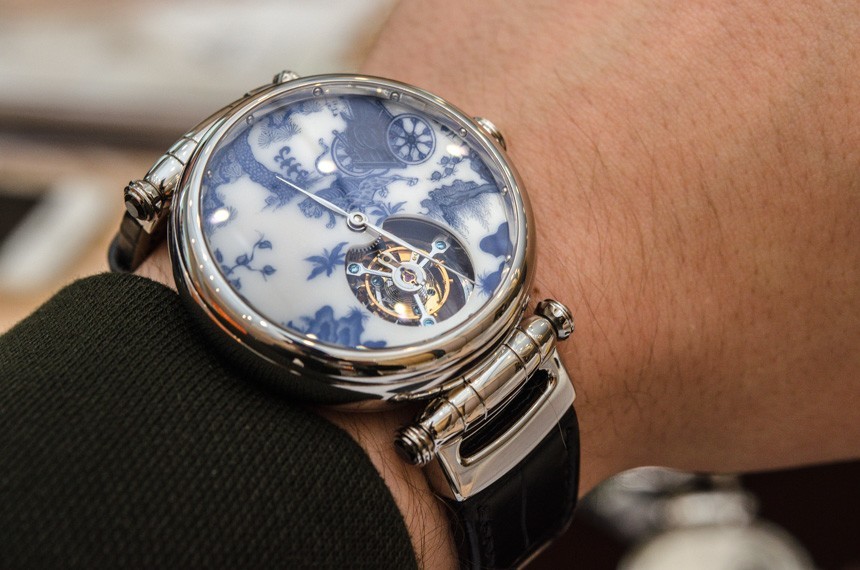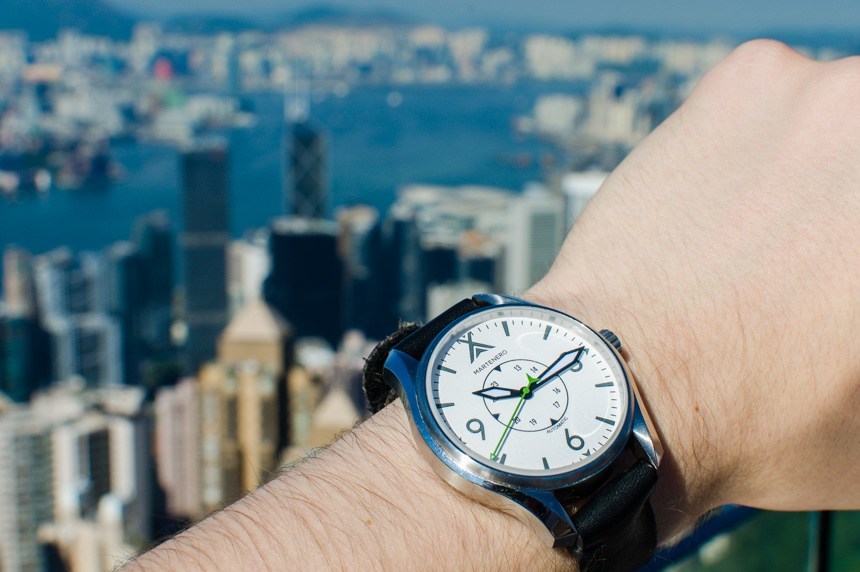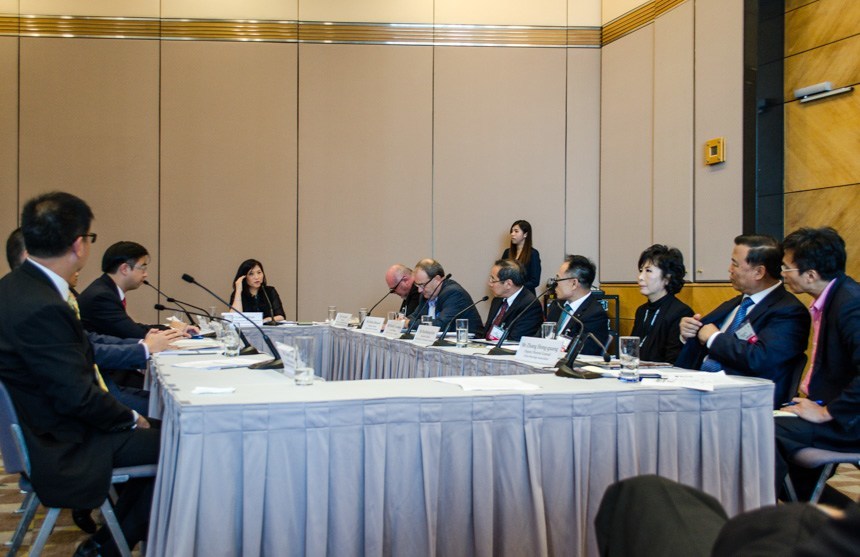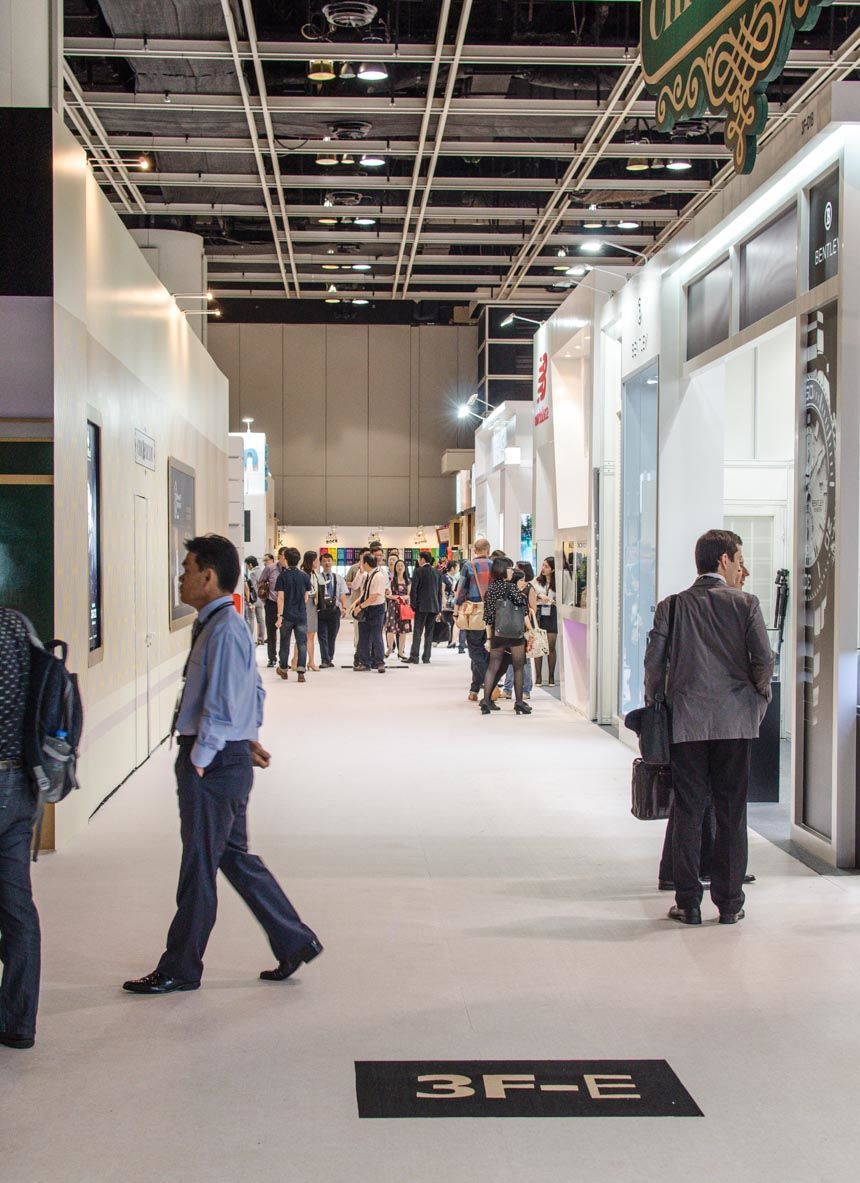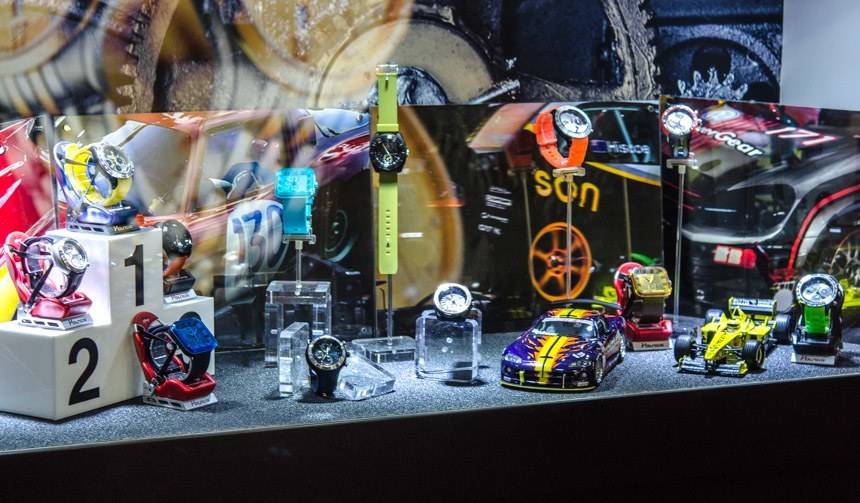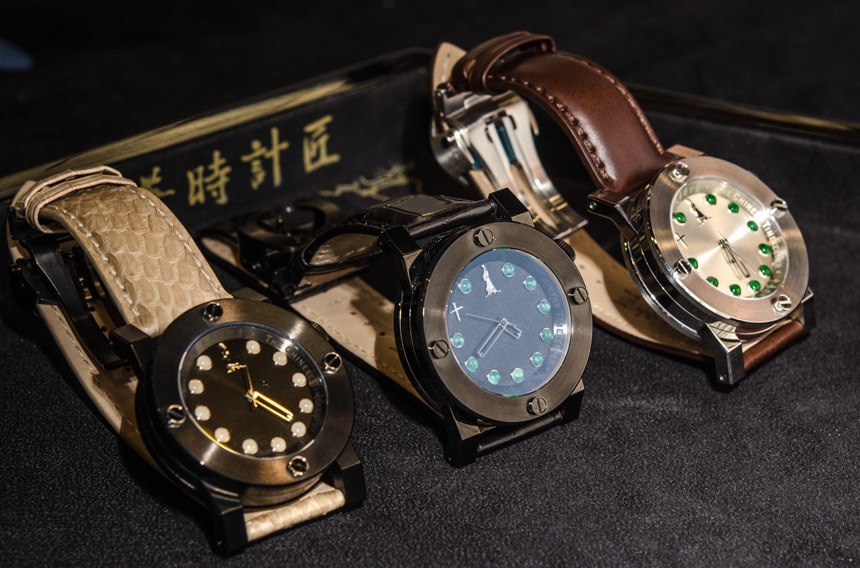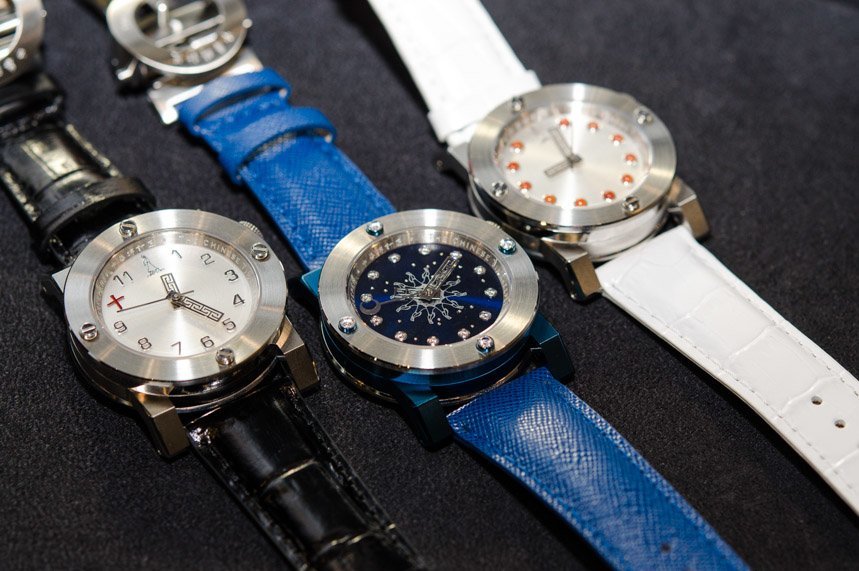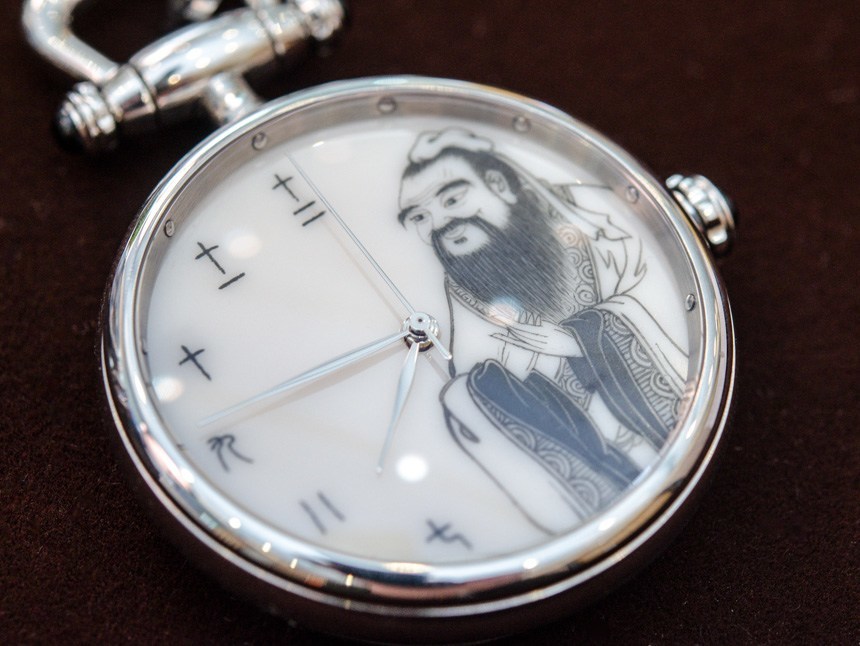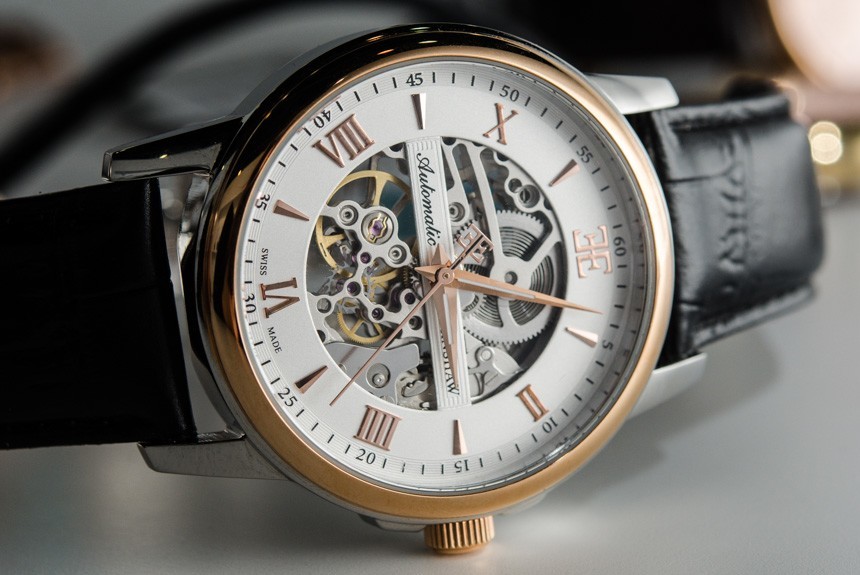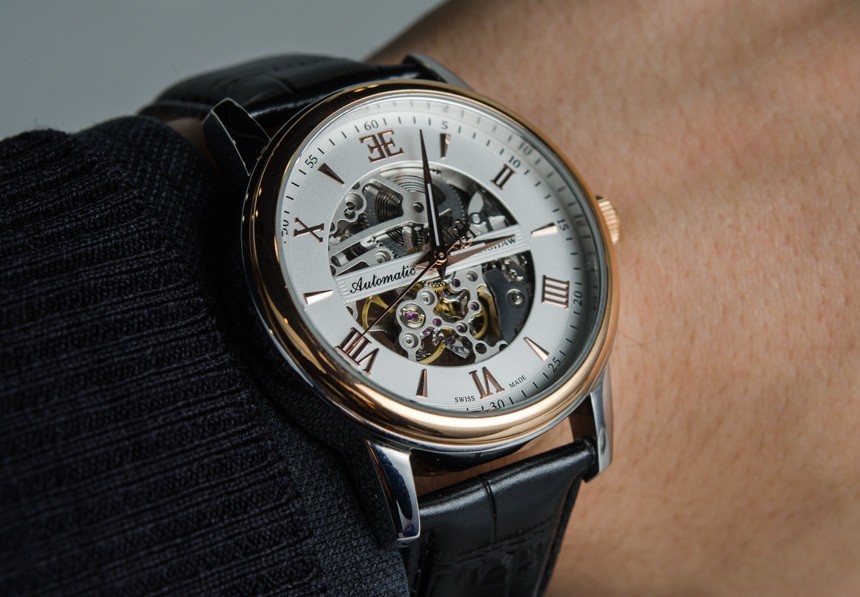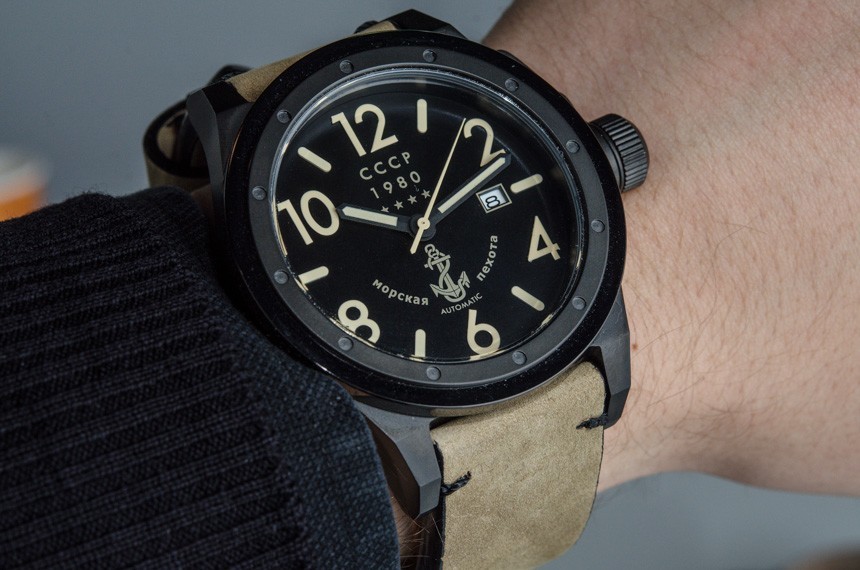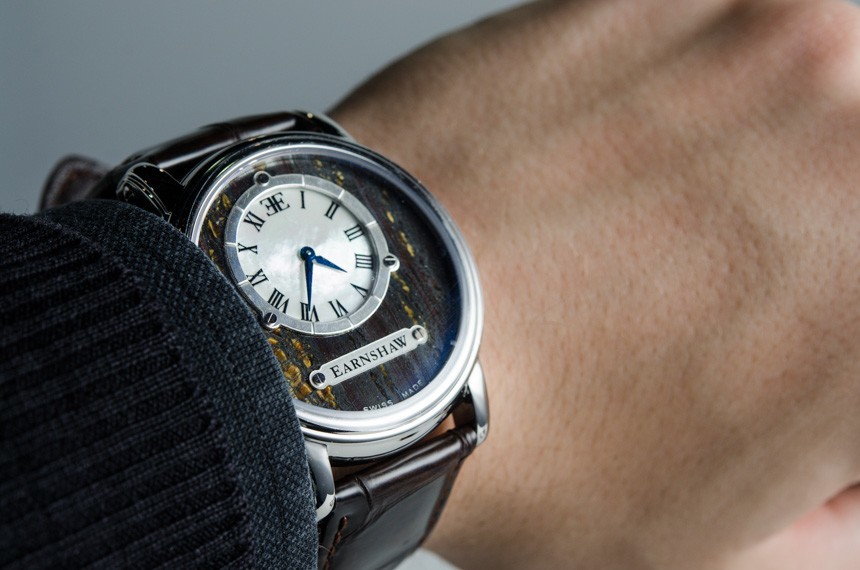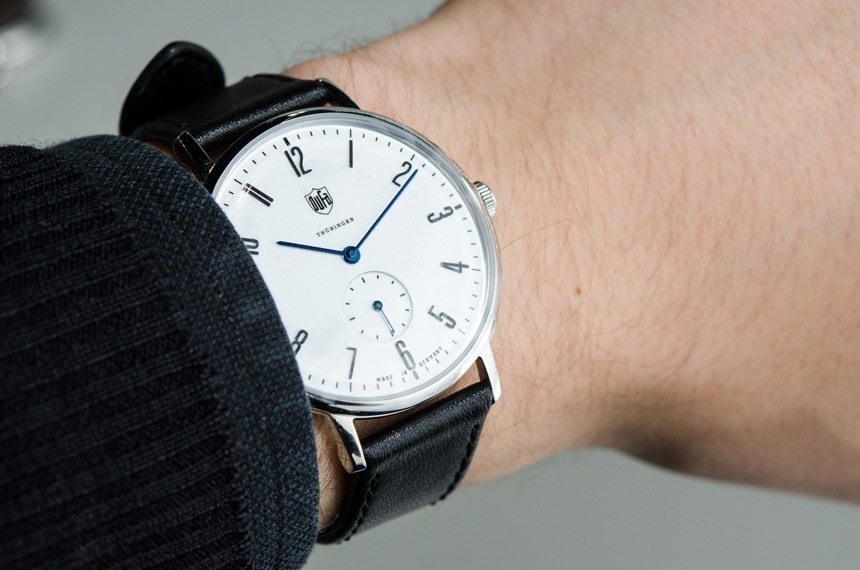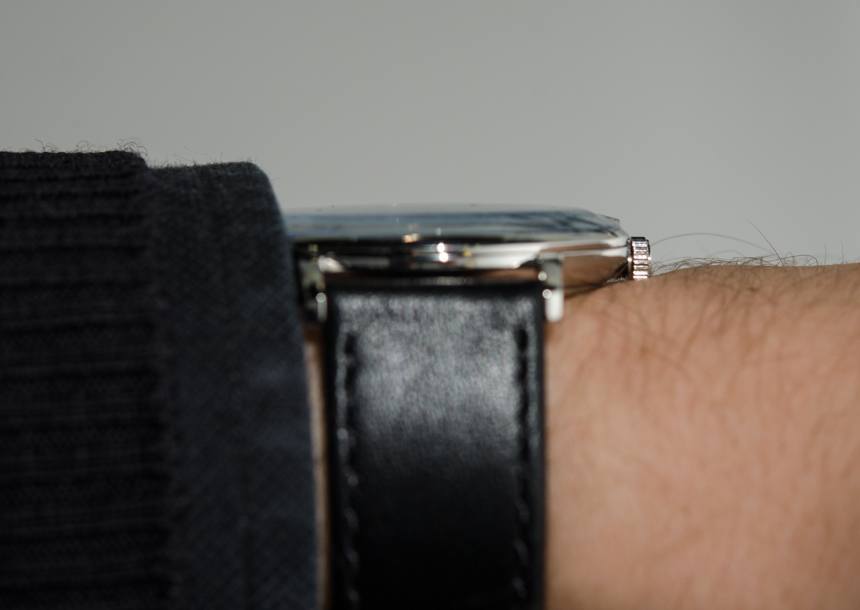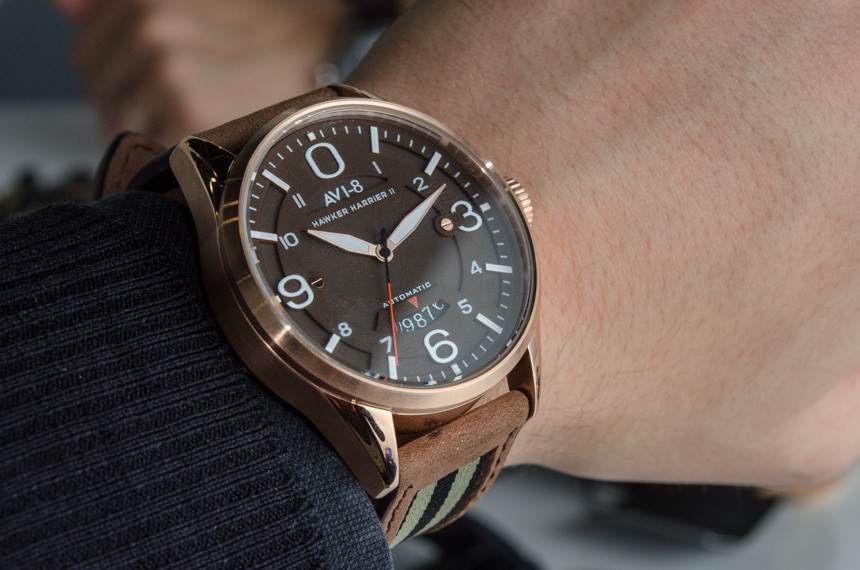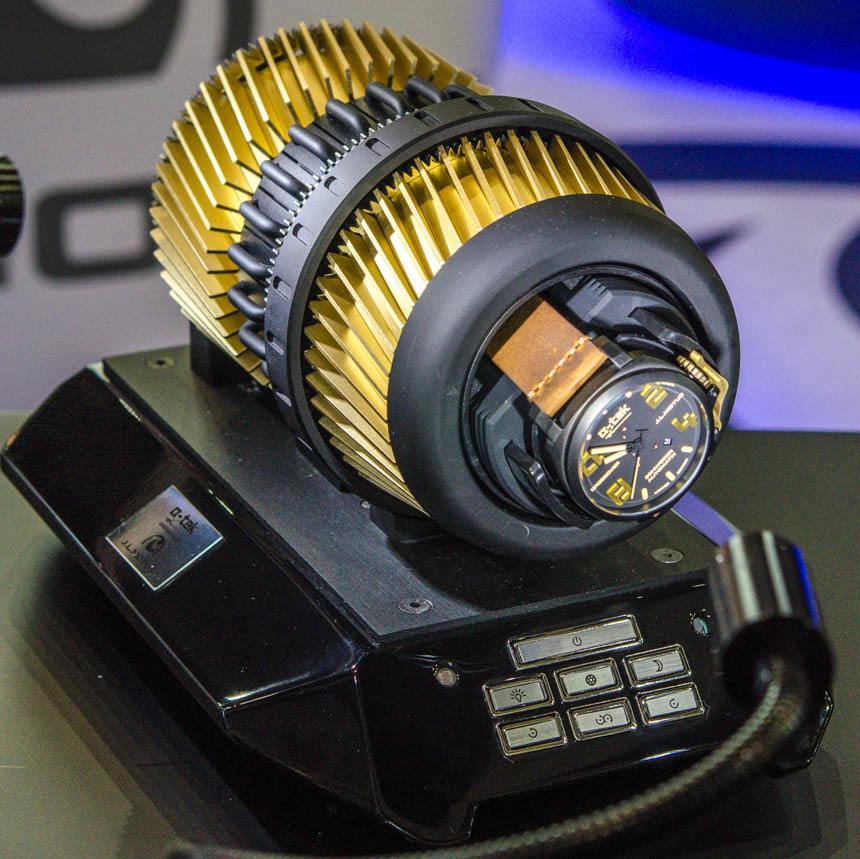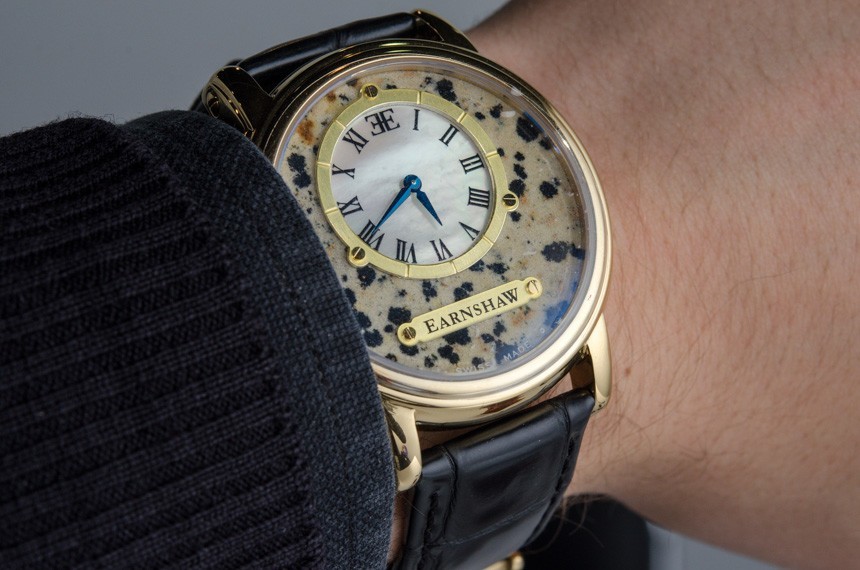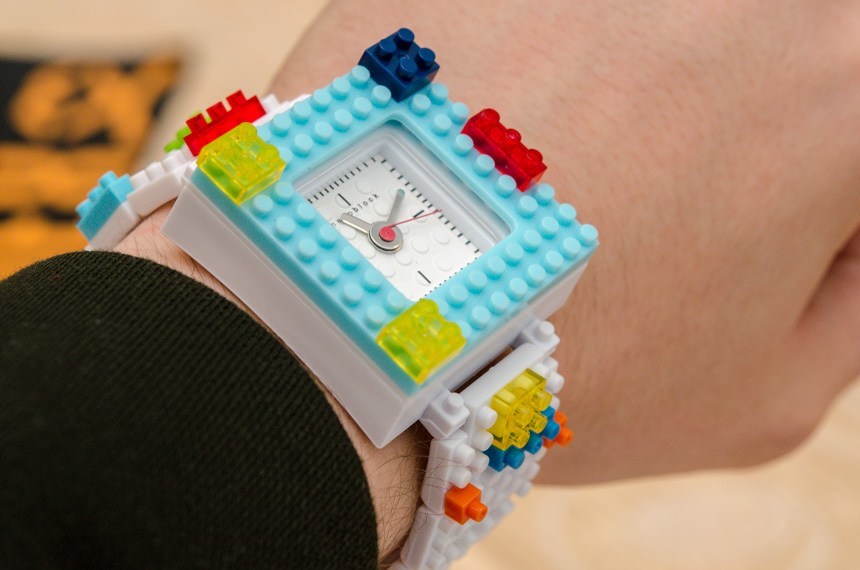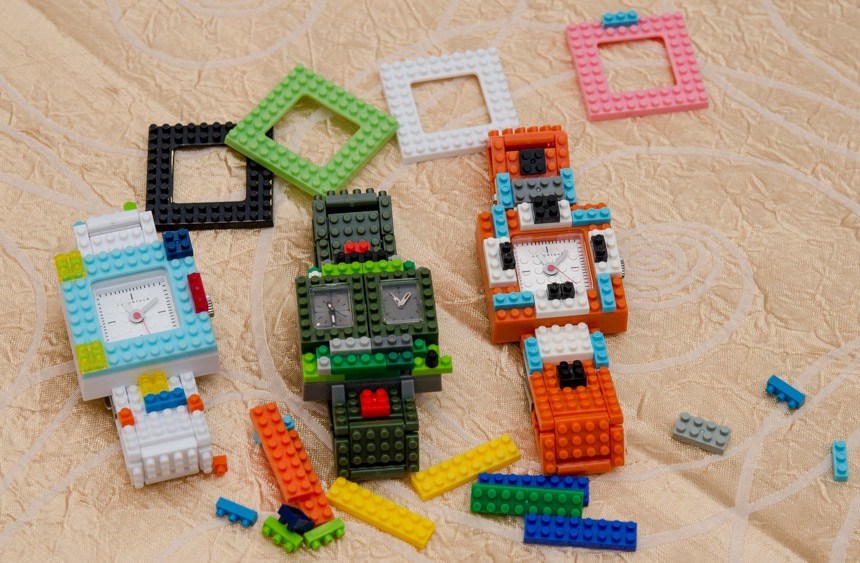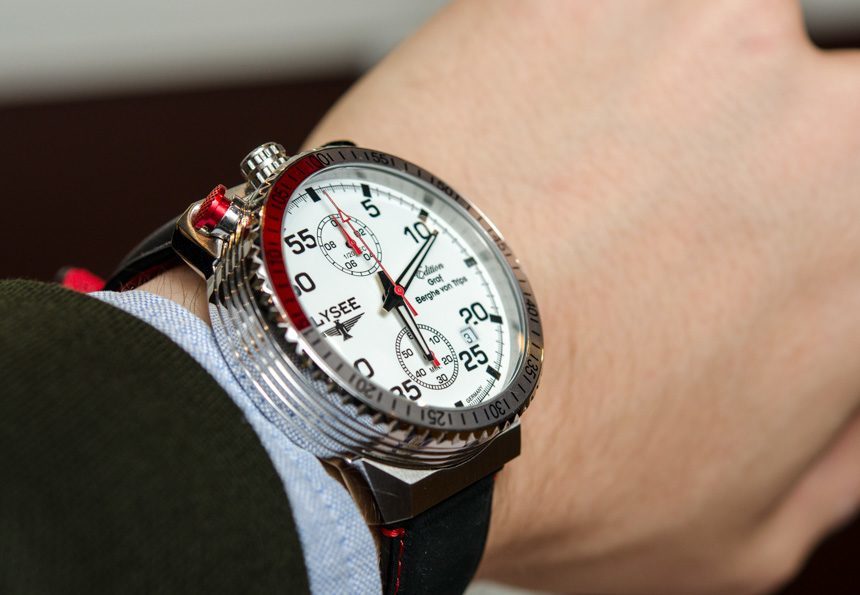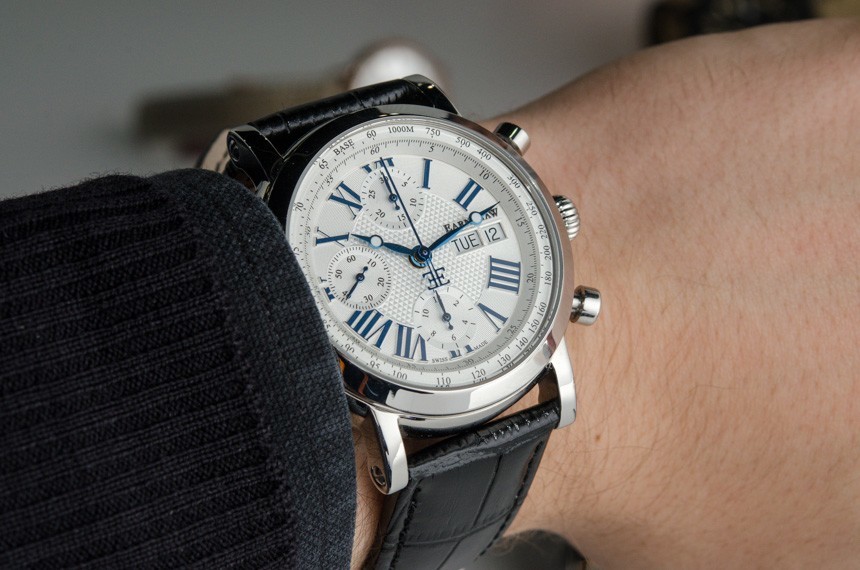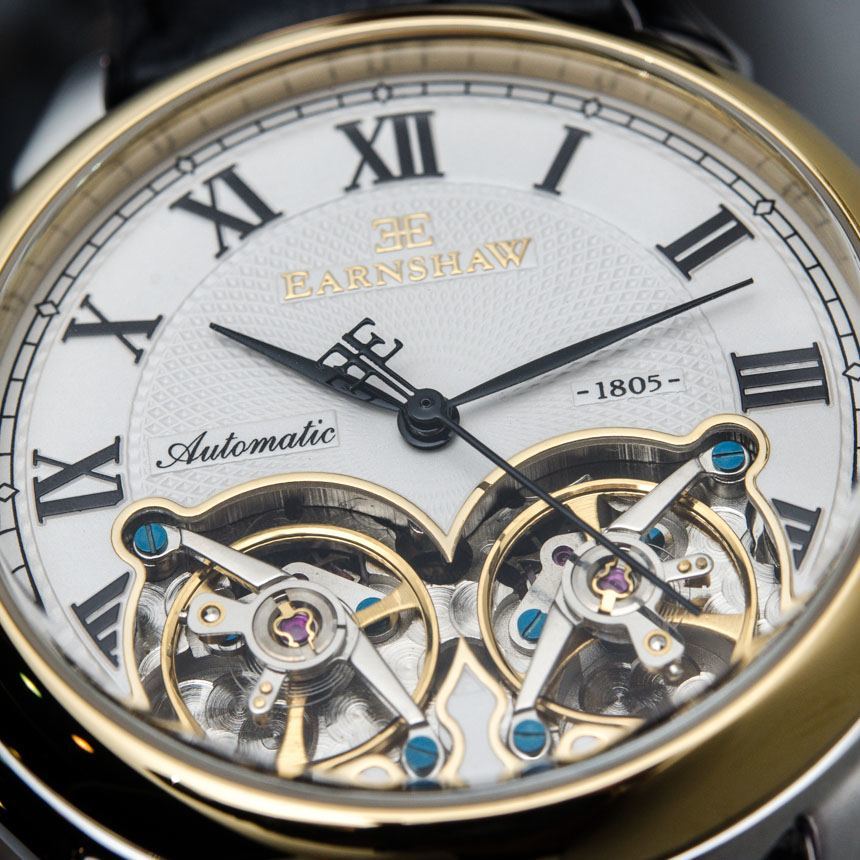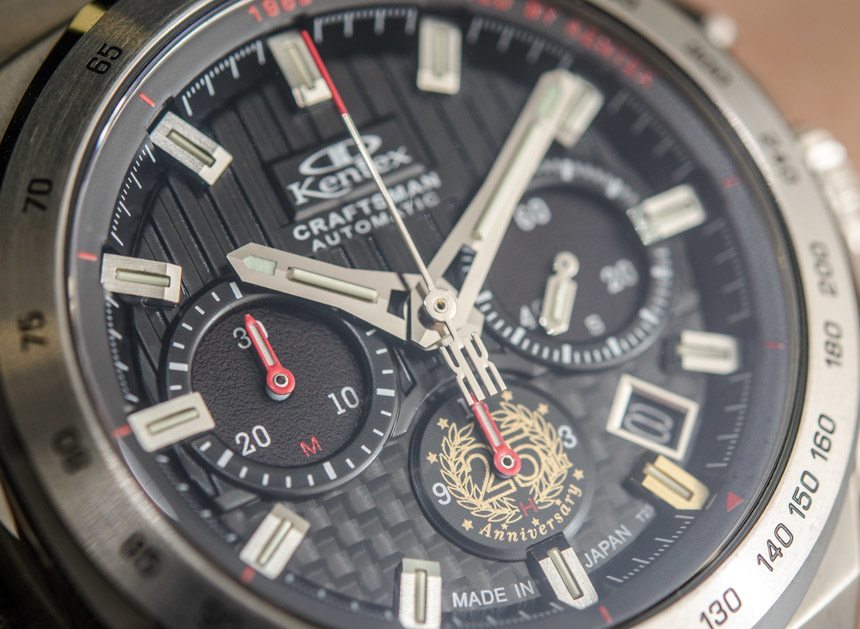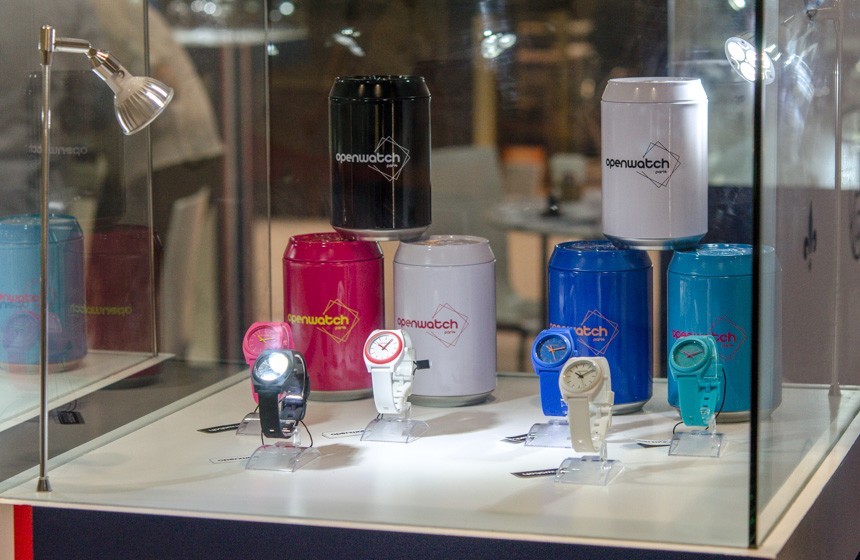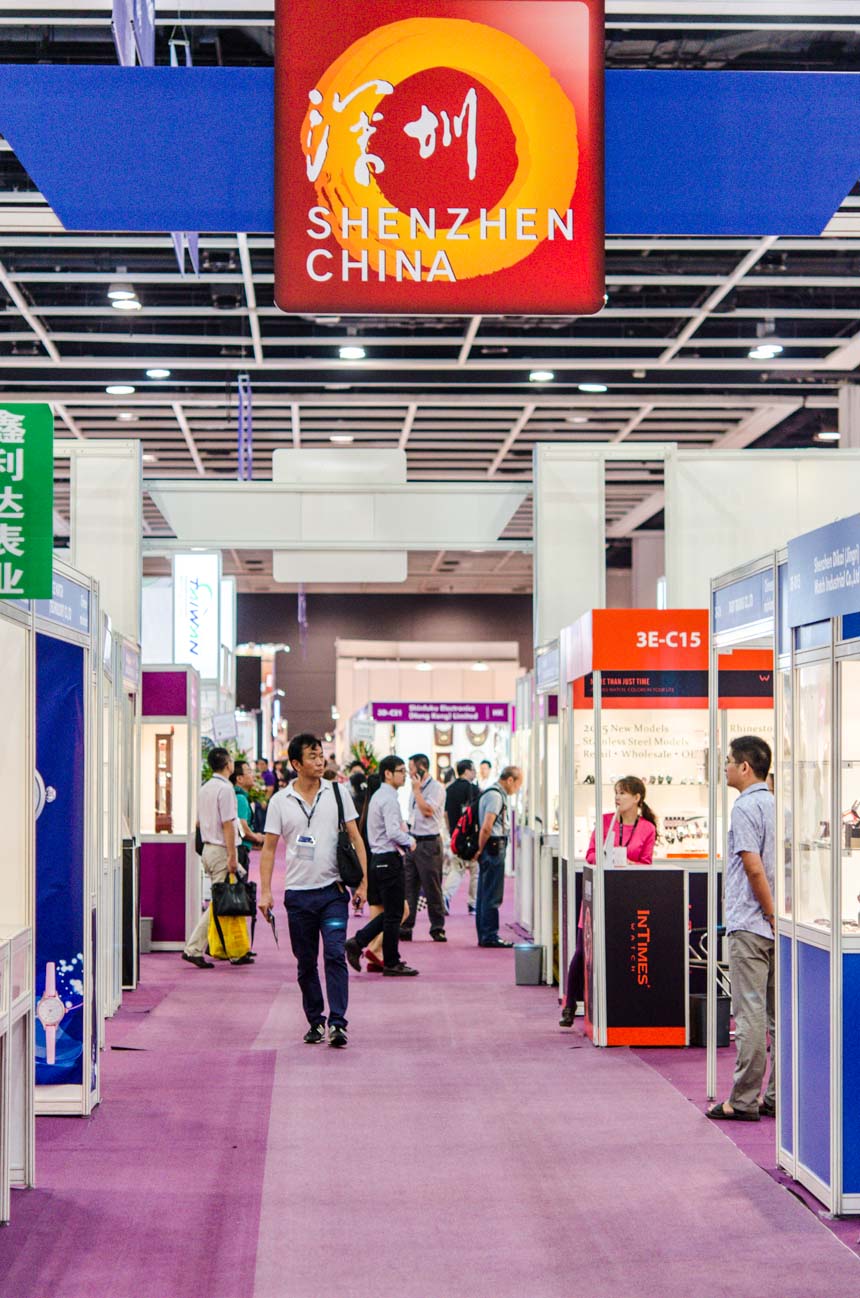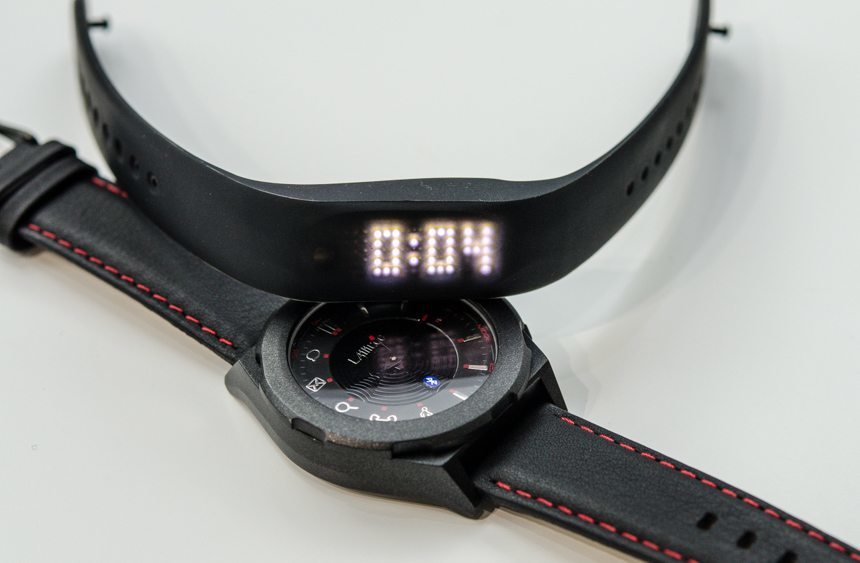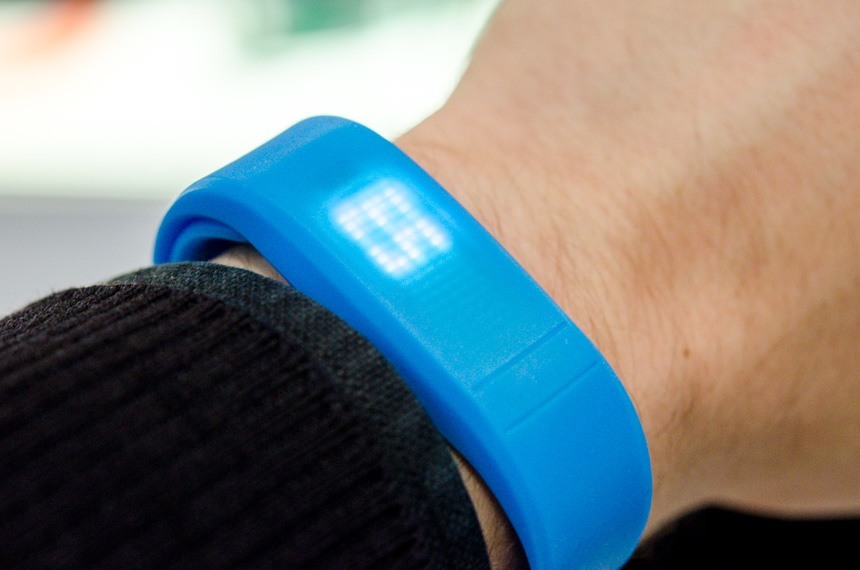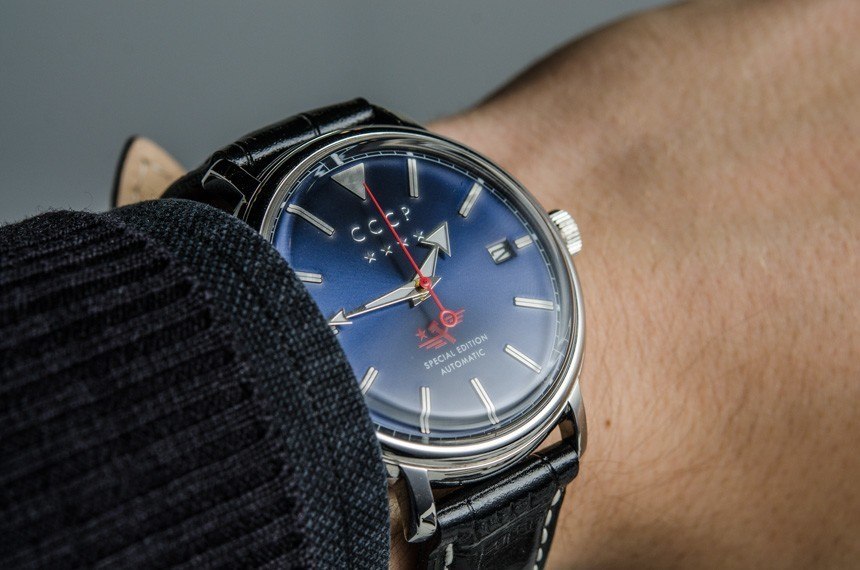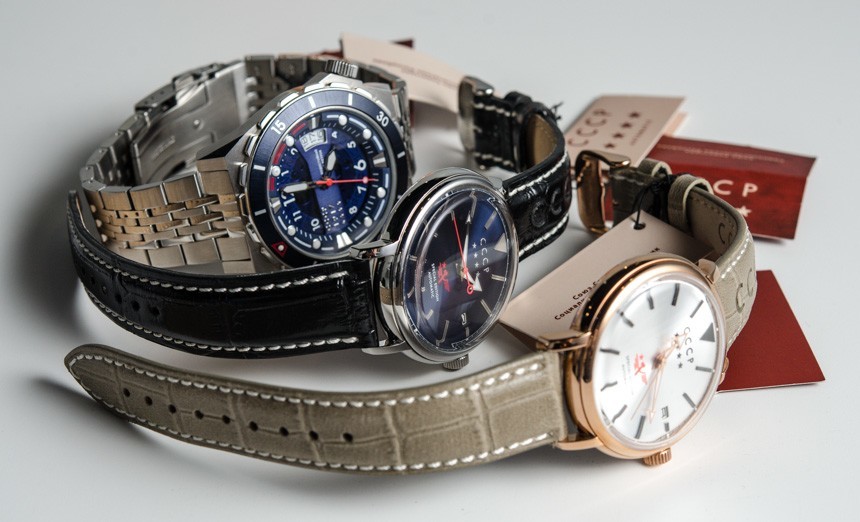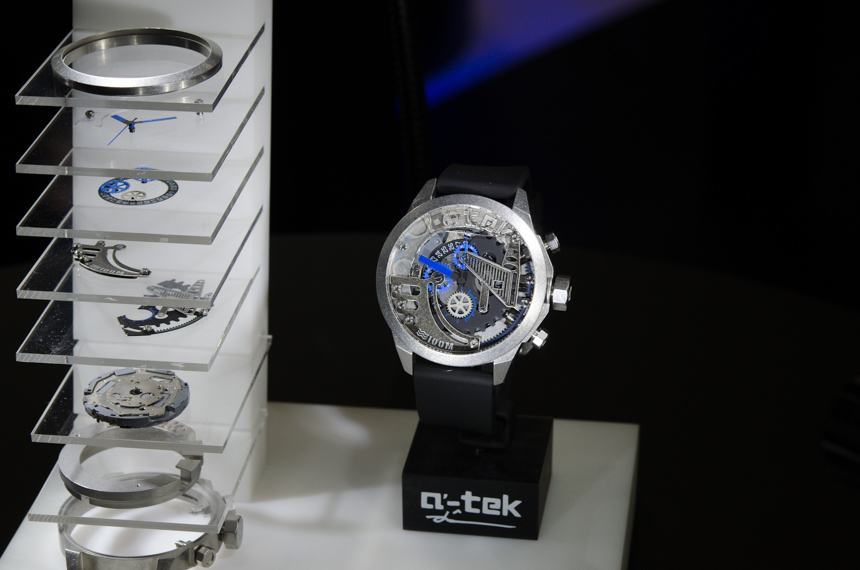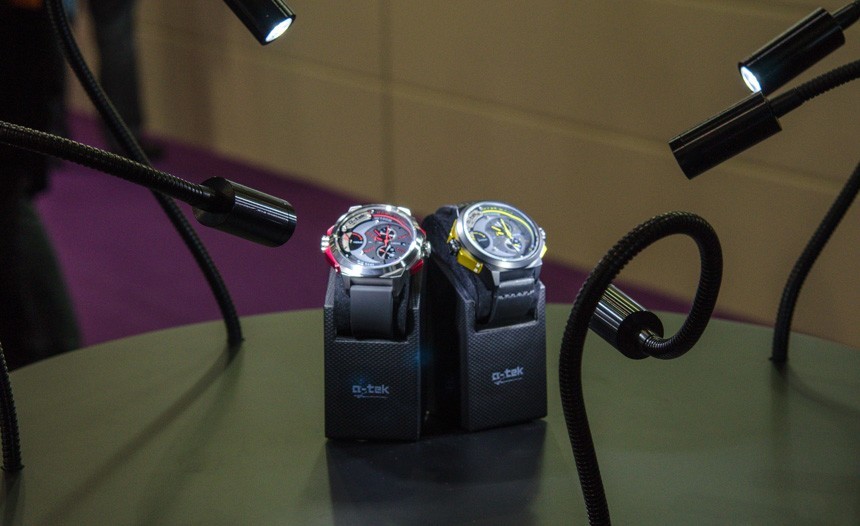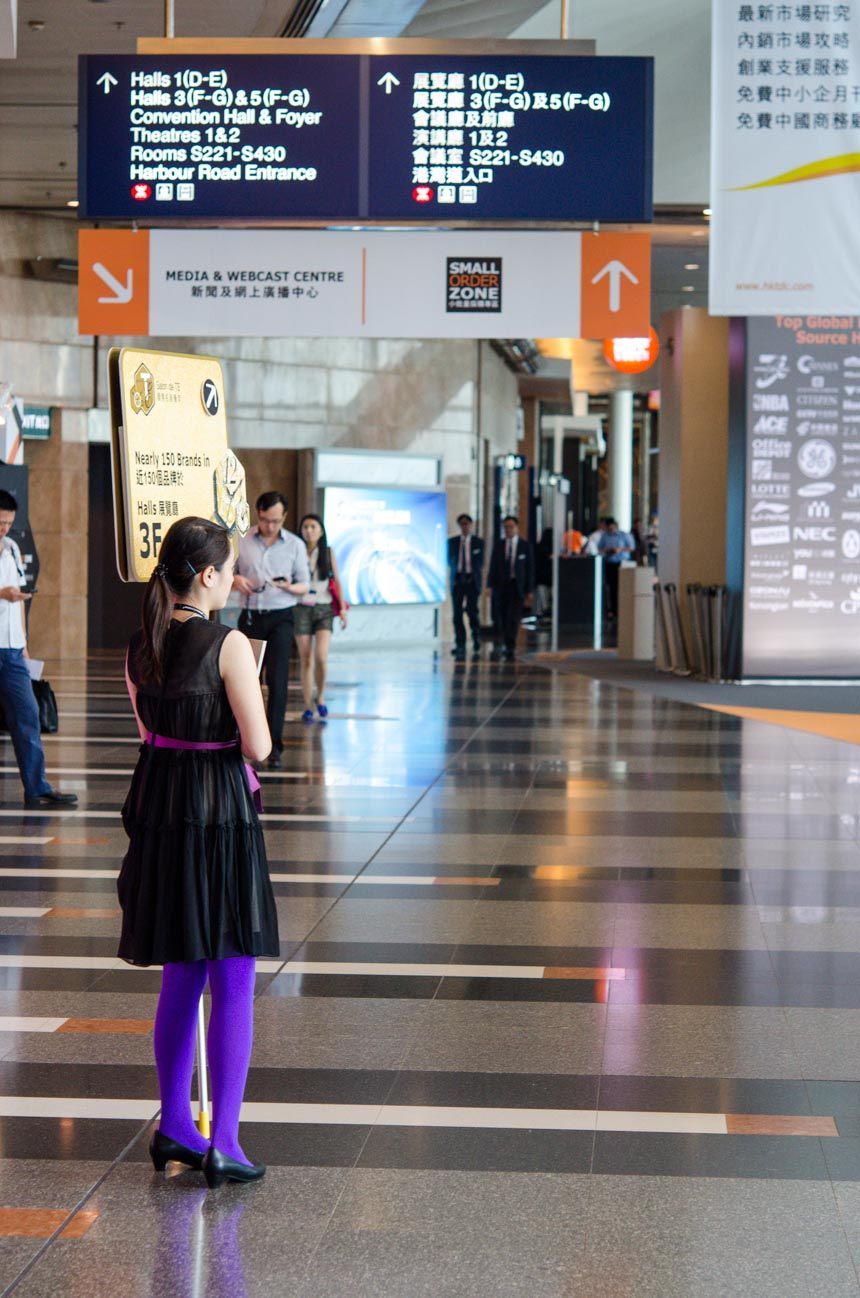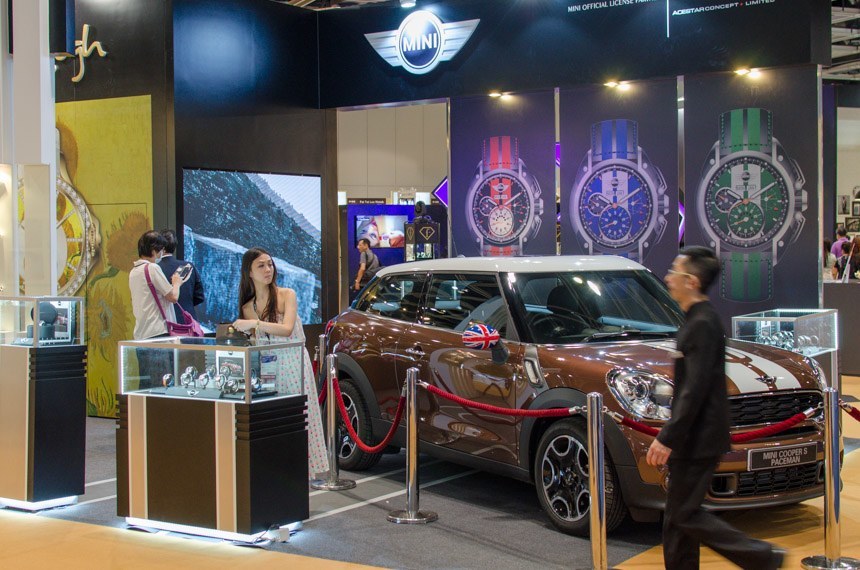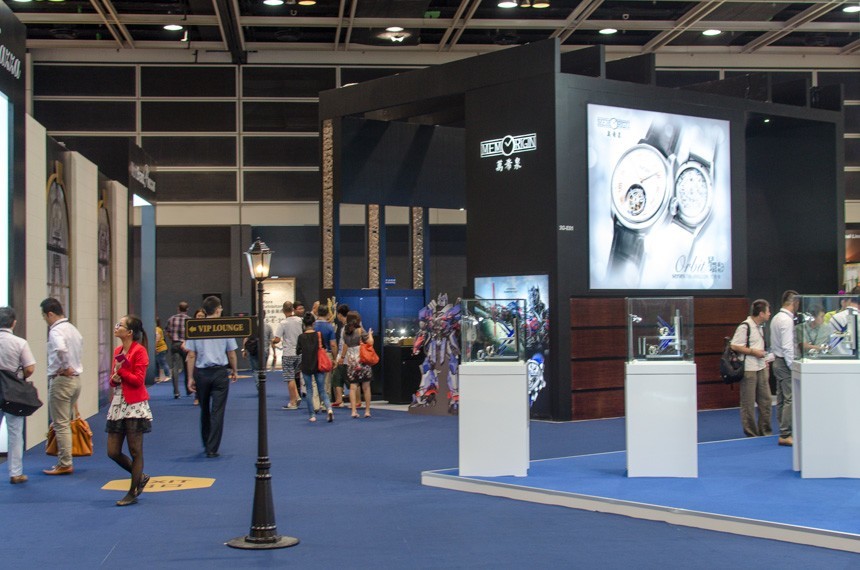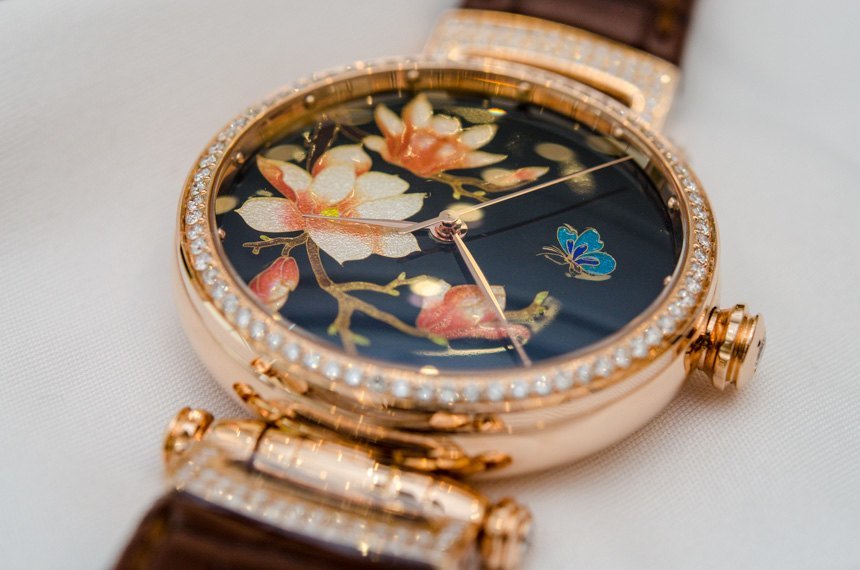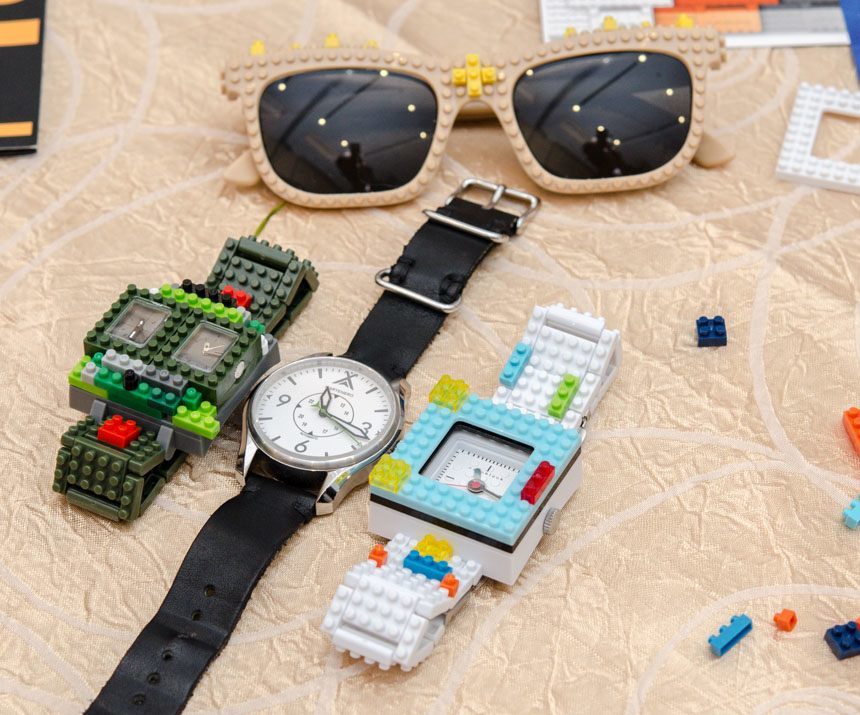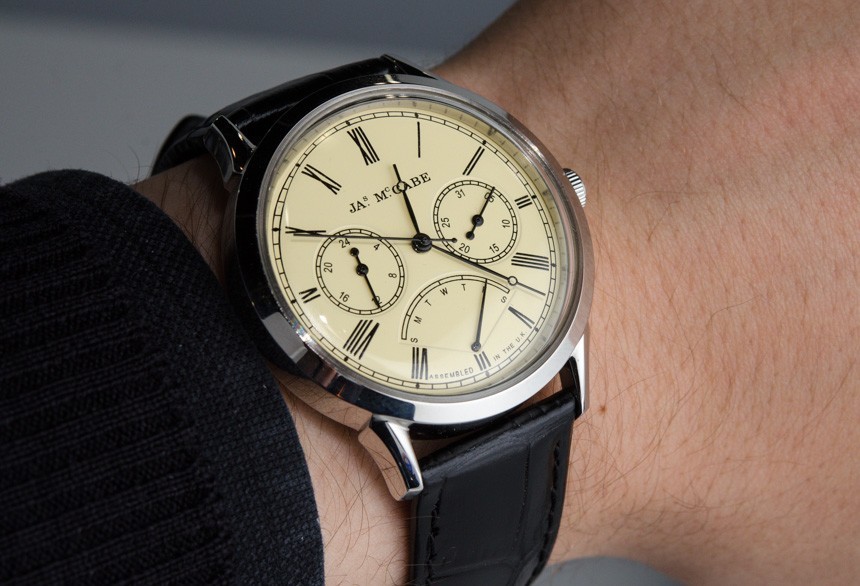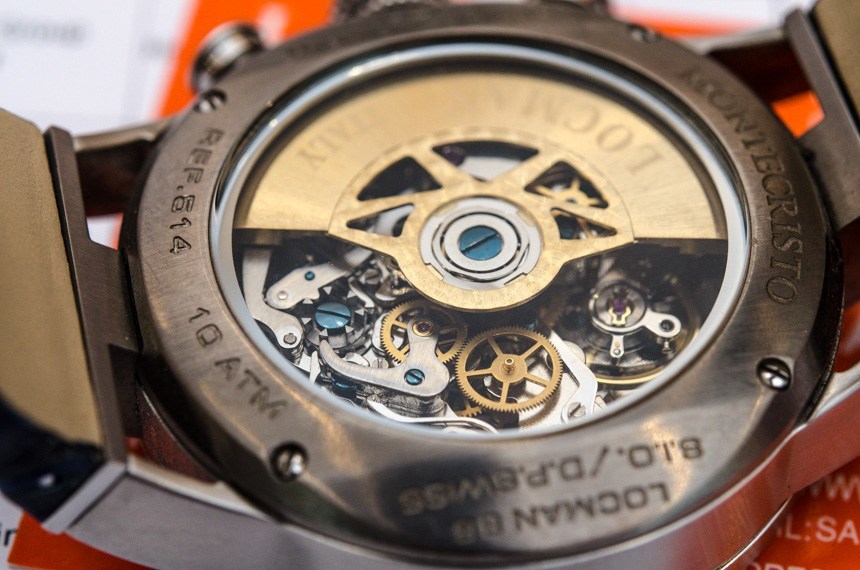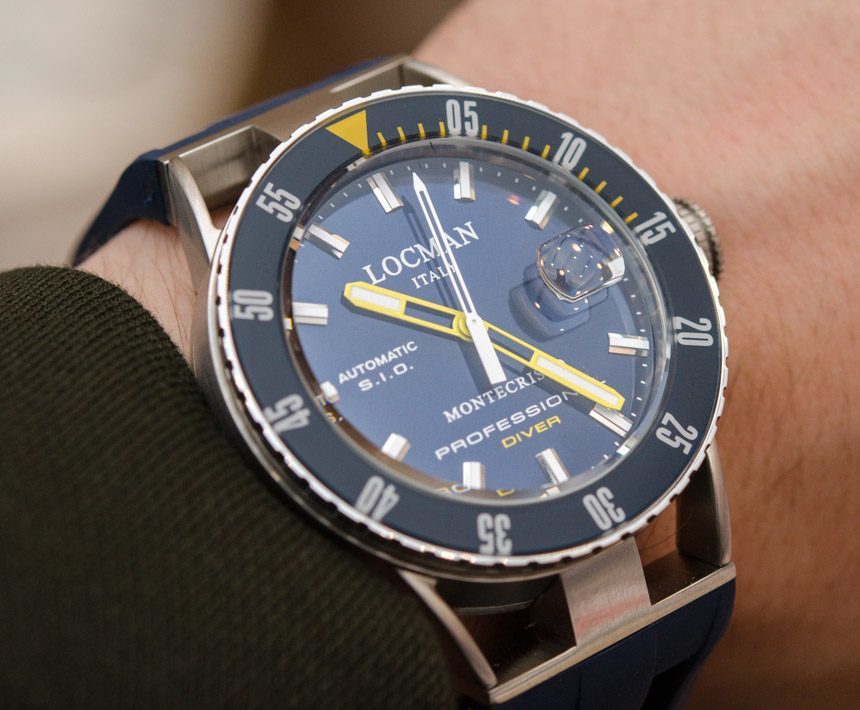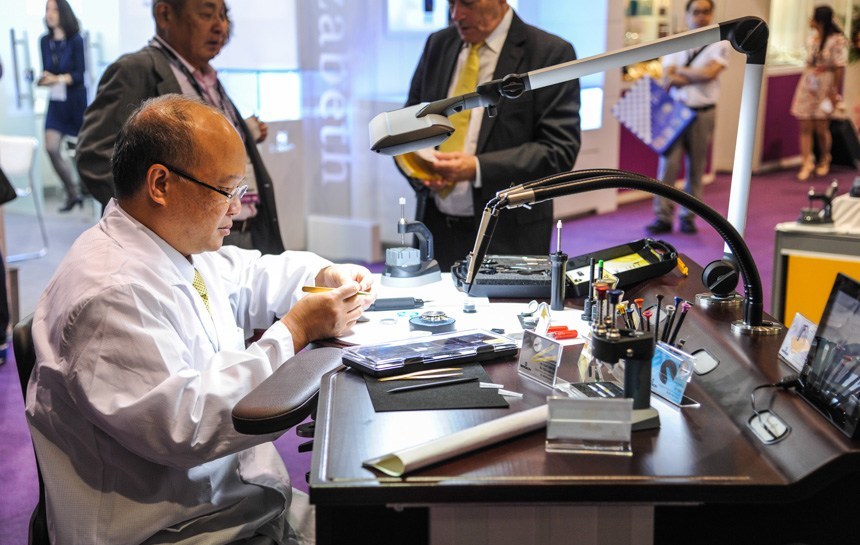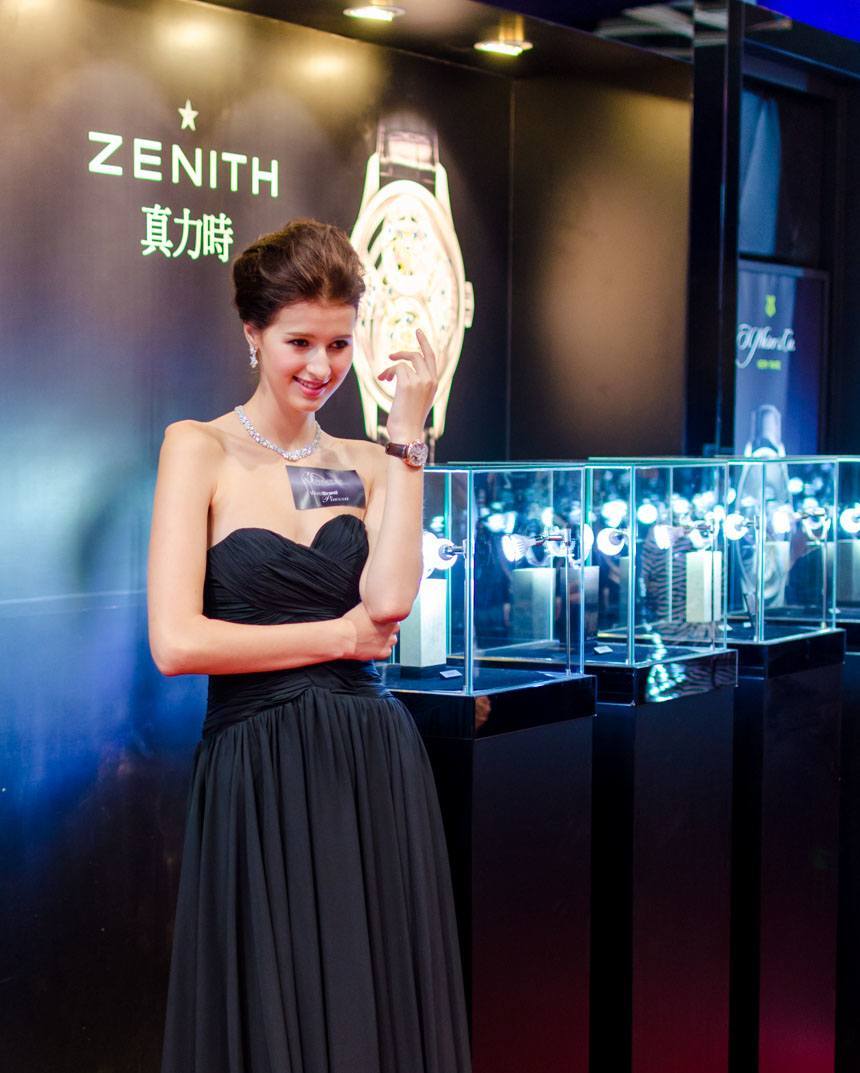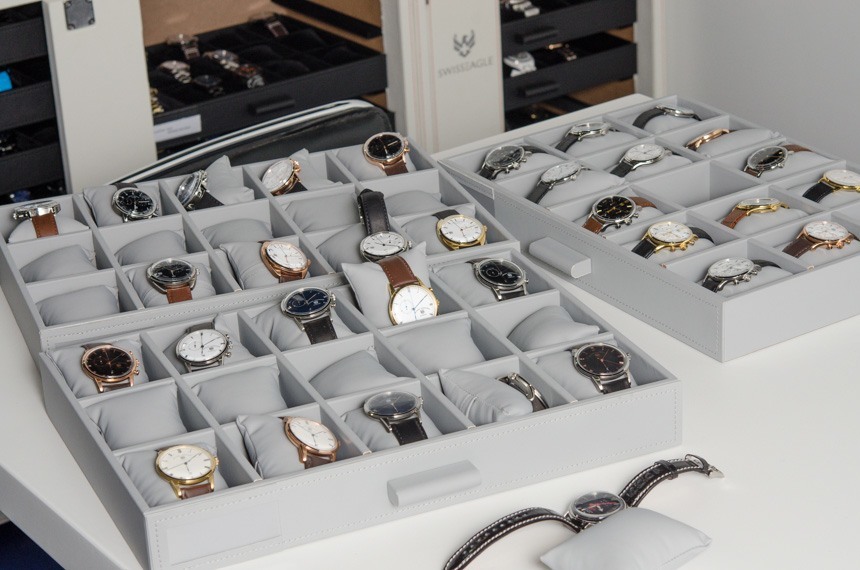
Moving on to calmer waters, the Hong Kong Watch & Clock Fair is quite possibly the most suitable event – if for no other reason then for its sheer size – to assess the latest trends in the Asian watch market. Having visited dozens of brands and looked at hundreds of window displays, I learned that, when it comes to mechanical watches, the craze over few-thousand-dollar tourbillons and other considerably cheaper solutions we saw a few years back has settled down – or rather, has become more ubiquitous. While blatant copies and weird, “Frankenwatch” mixtures of famous watch designs are of course still widely available, there is a much more interesting idea taking shape: that of the proudly Chinese made watch.
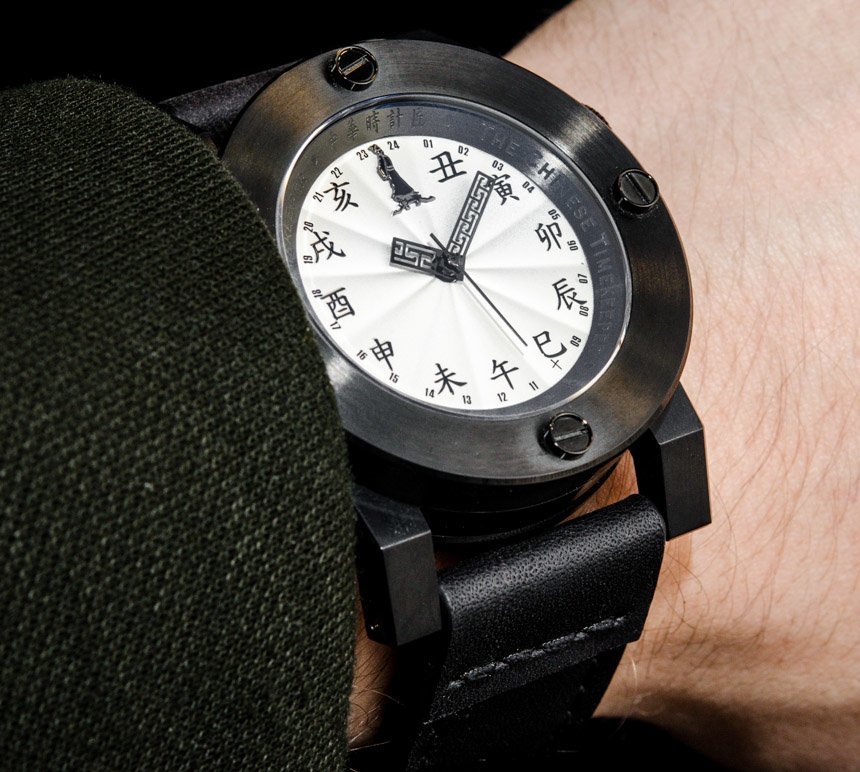
The Chinese Timekeeper Prides Itself As Being The First Proudly Chinese Made Luxury Watch. On The Wrist Is The CTK16 With Traditional Chinese Zodiac Signs Used As Hour Markers. Price Is $3,095
It was never a question of “if,” but rather when this was going to happen, and while the Chinese watch of this kind is still in a very early stage, it makes us expect a very interesting next few years as far as the future of the region’s watchmaking is concerned. Those who have been paying closer attention to China will know that this massive nation of 1.35 billion people has been quickly developing its own domestic market – and a market that is nearly 1.4 billion people strong offers incredible potential.
This primarily concerns, not the masses who are slowly but surely beginning to earn more, but rather, the staggeringly quickly expanding number of wealthy individuals and families. This latter is a force to be reckoned with, and, more importantly, that already has to be catered to. The watch you see above is from a brand called The Chinese Timekeeper and they say they are the first proudly Chinese designed and manufactured watch brand. This particular example has a 24-hour display with hour-markers from the Chinese Zodiac which, as I was told, were traditionally also used to mark 2-hour intervals on centuries old clocks.
New Chinese initiatives, who are about to take on the much better known and widely accepted luxury brands of the Western world, are trying their best to tastefully incorporate traditional Chinese cultural elements, motifs that speak to their clientele. With that, I have seen high-quality enamel painted dials, case back engravings, and unique-to-Chinese ways of telling time. All this is done in hopes that the ones already on the market will have an advantage over those who will newly enter the Chinese market – and a consequence of the rapid development in this segment also means that just 5 years of advantage can prove to be as important as decades or centuries are in Swiss watchmaking.
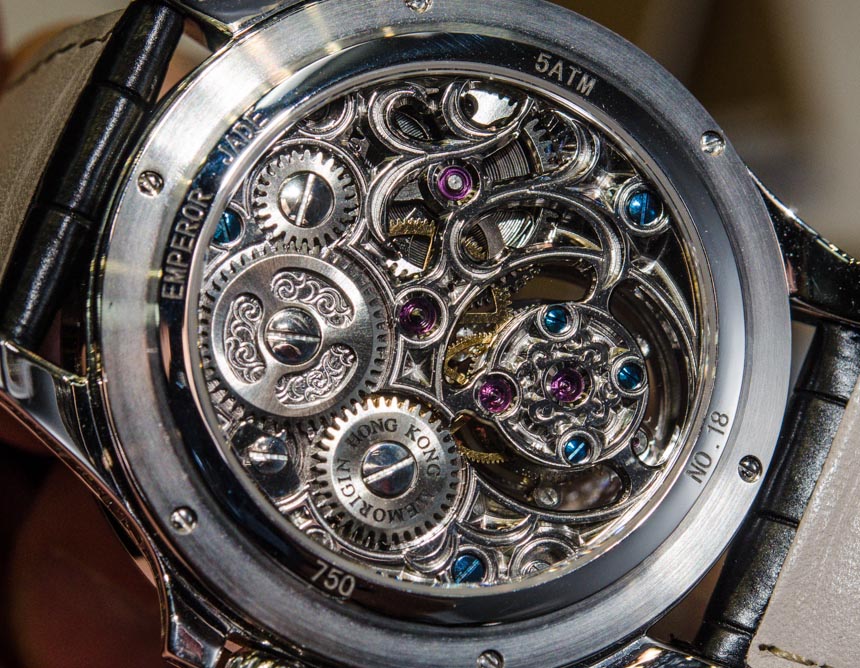
Caseback Of A Tourbillon Model Of Memorigin: Hand Engraved Surfaces And Beveled Edges Adorn The Movement That Shows Improved Quality Over Previous Years’ Models
Speaking of which, the 2014 Hong Kong Watch & Clock Fair offers a splendid blend of European and Chinese watchmaking – and not just when it comes to “inspired” designs. While there are no major Swiss brands officially present at the Hong Kong Watch & Clock Fair – excluding a Hong Kong based jeweler’s sponsored exhibition of around a dozen high-end Swiss brands that it carries – one can certainly sense that the fair is heavy with important business meetings and new collaborations between European and Chinese makers. With negligible exceptions, the entire affordable Swiss made watch segment – say around $3,000 and below – relies hugely on imported key components, including cases, dials, movement parts, and more.
Certainly, common belief is that the Swiss are keen on protecting their “Swiss Made” label, and that actually is more true than ever – presently, the law says that 60% of the cost of the timepiece has to be manufactured in Switzerland. By contrast, Germany – another important country whose “German Made” label carries comparable weight and a similar pricing premium – is easier on that and requires that the assembly and the after sales service has to take place in Germany, without restricting the source of any components. This could easily lead us into a political and administrative labyrinth, but instead, let’s focus on what really matters: where parts are coming from and how an expected level of quality is maintained?
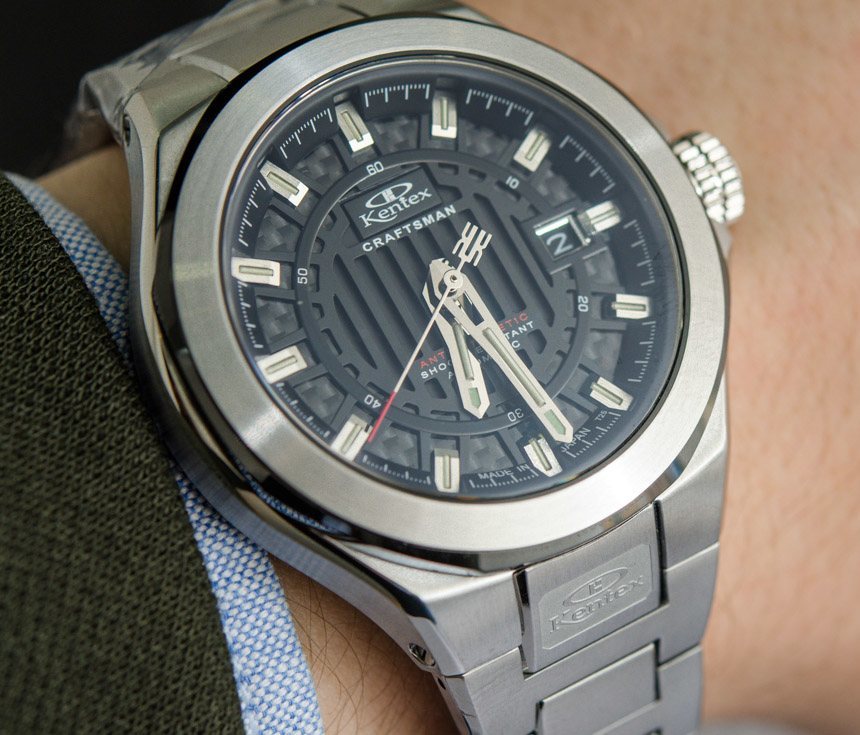
This “Craftsman” Model By Japanese Brand Kentex Watch Incorporates More Interesting Components Such As A Carbon Fiber Dial, Tritium Gas Tubes And A Ceramic Ring Between The Bezel And Case. Price Is Around $1,300
As noted above, parts can come from any corner of the world – and oftentimes, that “any” happens to be China. As I was looking at the products of countless different Chinese, Swiss, and German brands, I could clearly see massive improvements in quality when it came to scrutinizing Asian-made parts. I was not afraid to ask brands where parts of their products were coming from, and my inquiries were greeted with surprisingly straightforward answers. From elaborately crafted bracelets, PVD coated cases, to uniquely designed ceramic components and dials in unique stones and carbon fiber – nearly everything is available from China, and the quality is certainly there if one gets to work with the right source, and is willing to pay the price for it.
The watch you see above is built by a Japanese manufacturer by the name of Kentex, and while that, again, may not be the most beautifully chiming name in the industry, the quality of the watch has been more than impressive. It comprised hands and indices with tritium gas tubes, a multi-layered, carbon fiber dial and a shiny ceramic ring that separated the bezel and the case – all with a suggested retail price of around $1,300, with many of these components coming from China-based suppliers. Given the exceptional quality, the price, and the design, it could well be a poor-man’s IWC Ingenieur.
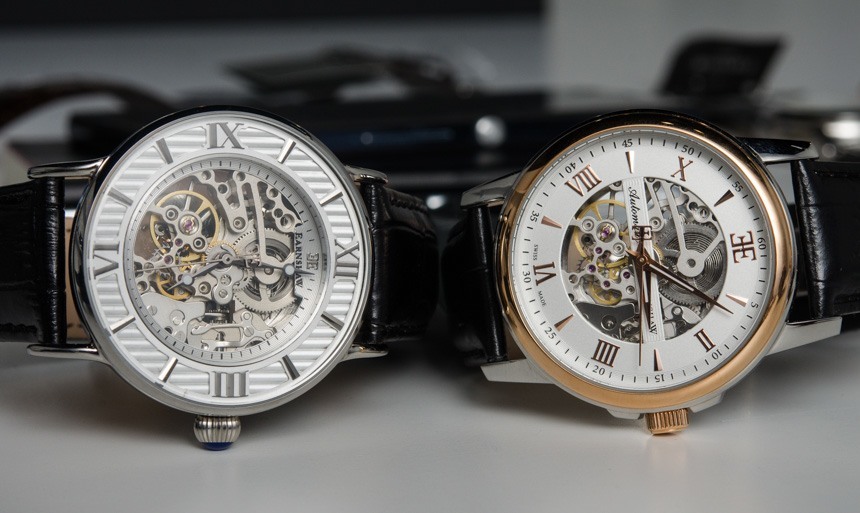
The Earnshaw Beagle Watch With A Swiss Made Movement To The Right And Its Lower Priced Non-Swiss Counterpart
The variety of parts – in design and in quality – is virtually endless, and it all comes down to what one makes of it. What you see above are two somewhat different models from a highly popular Hong Kong-based brand, Earnshaw, who seems to have understood that. The model on the right is called the Beagle, and if you are looking for more details about it – beyond the somewhat weird name for a watch – you may find our review of the Beagle watch here. The reason we are talking about it now is that at the Hong Kong Watch & Clock Fair, I had the chance to compare this “Swiss Made” watch to its Asian made counterpart – another model that Earnshaw makes for about half of the price of the Beagle that is basically designed and distributed for different markets.
What makes this comparison worthy of our – and all movement-enthusiasts’ – attention is the origin movement: upon closer inspection, you will see that the movement of the Beagle and the other watch are just about perfectly identical. And yet, one of them is marked Swiss made, and the other is not – how is that possible, and what does it mean in more general terms?
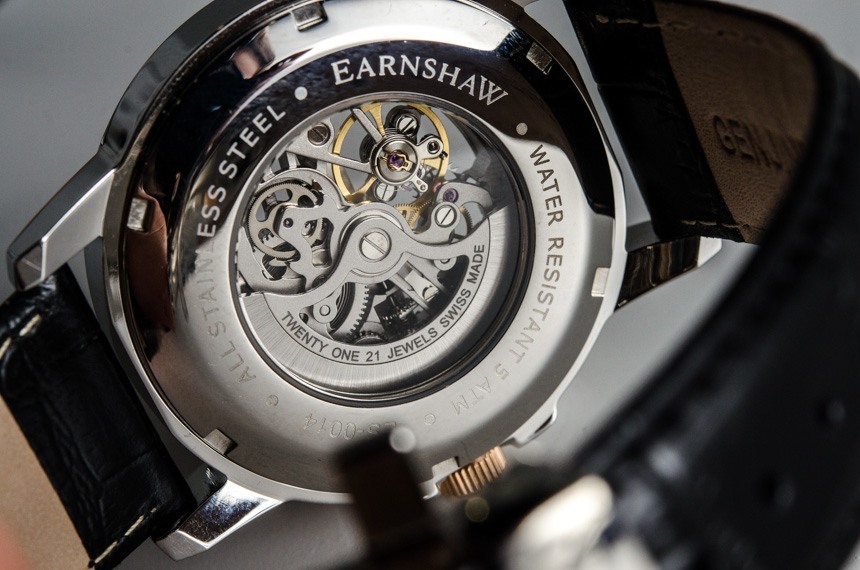
Well, the watch on the right carries a Swiss made movement, while the one on the left does not have that prestigious designation. I had the opportunity to chat with the technical director of the company, the engineer who, of course, knows by heart all the different mechanical and quartz movements the brand works with. He told me that the layout of the two movements are basically the same, and a large number of components are shared between the two watches – and yet, the more expensive piece fully complies with Swiss regulations.
However, the key difference is to be found in the more important details, as the Swiss movement has been assembled there and contains different jewels and springs and runs much more accurately than its Chinese counterpart. Added accuracy, higher-quality key components and Swiss assembly are the most important differences between the two offerings, while the Swiss made version’s price still remains at $500. It is all a balancing act really, and one that we see happen with just about all brands in the low- to mid-range of the market.
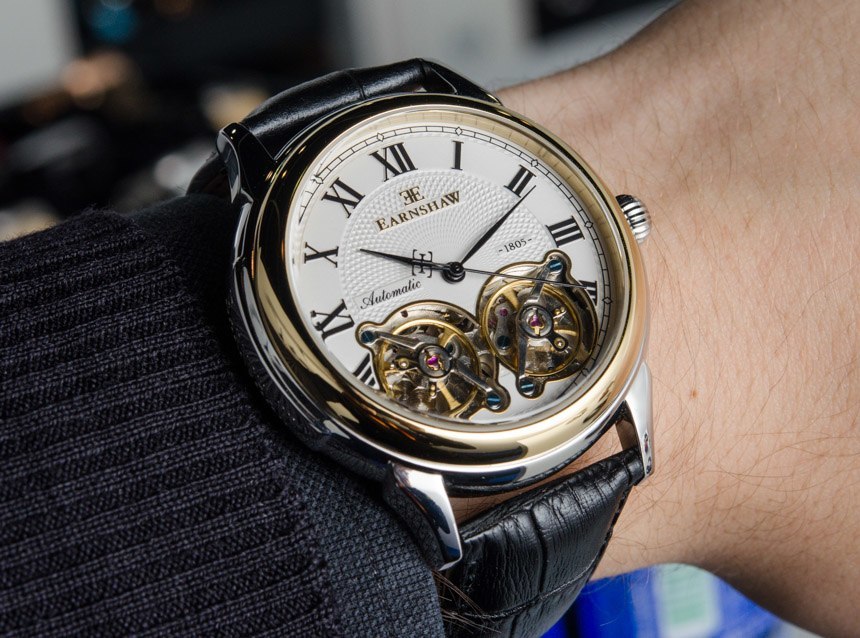
The Earnshaw Observatory Contains An Automatic Movement And Two Balance Wheels Exposed On The Dial Side, With One Of Them – While Functioning – Is Serving Merely Aesthetic Purposes And Is Not Used For Keeping Time. Price Is $860
Generally speaking, the take-away message is that the relatively new low-mid range of Swiss watches could not exist if it was not for a varying amount of imported parts – let that be movement ébauches, cases and dials, or straps. At this very moment, the Swiss regulations have set up a very fine line between what can be called a Swiss made timepiece and what cannot, and dozens of brands in neck to neck competition are trying to secure the lowest price points, while also providing a quality item that would not alienate the buyer, but rather motivate him or her to invest in more pieces. Earnshaw has been very open about their practices, a genuinely rare phenomenon in the watch industry, where everyone holds their cards suspiciously close to their chests.
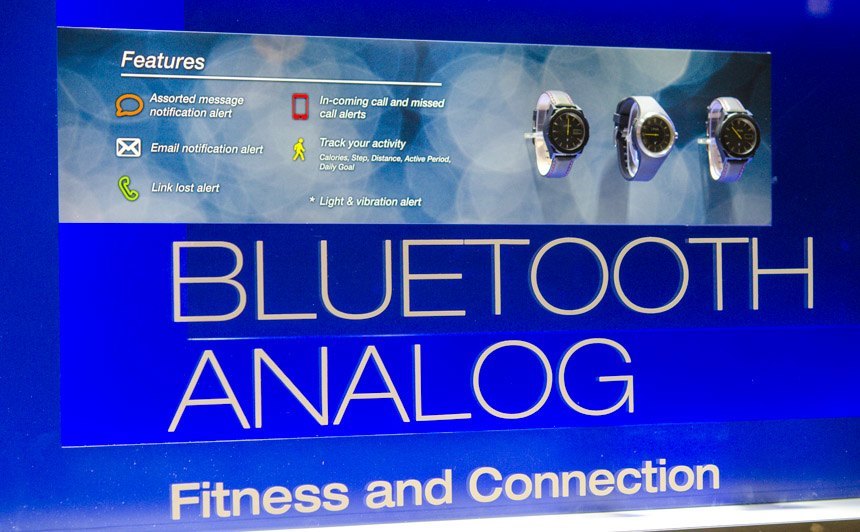
Moving away from mechanical watches for a bit, another hot topic of the fair was, of course, that of smartwatches, fitness watches, and so-called notification watches. Everyone wants to have a slice of this quickly expanding market, but few are getting it right at this point. The most common price point is that between around $69 and $299, from “fitbands” up to the better-made and equipped notification watches. There was an obvious lack of smartwatches in the “traditional” sense – meaning touch screens and more complex functionality.
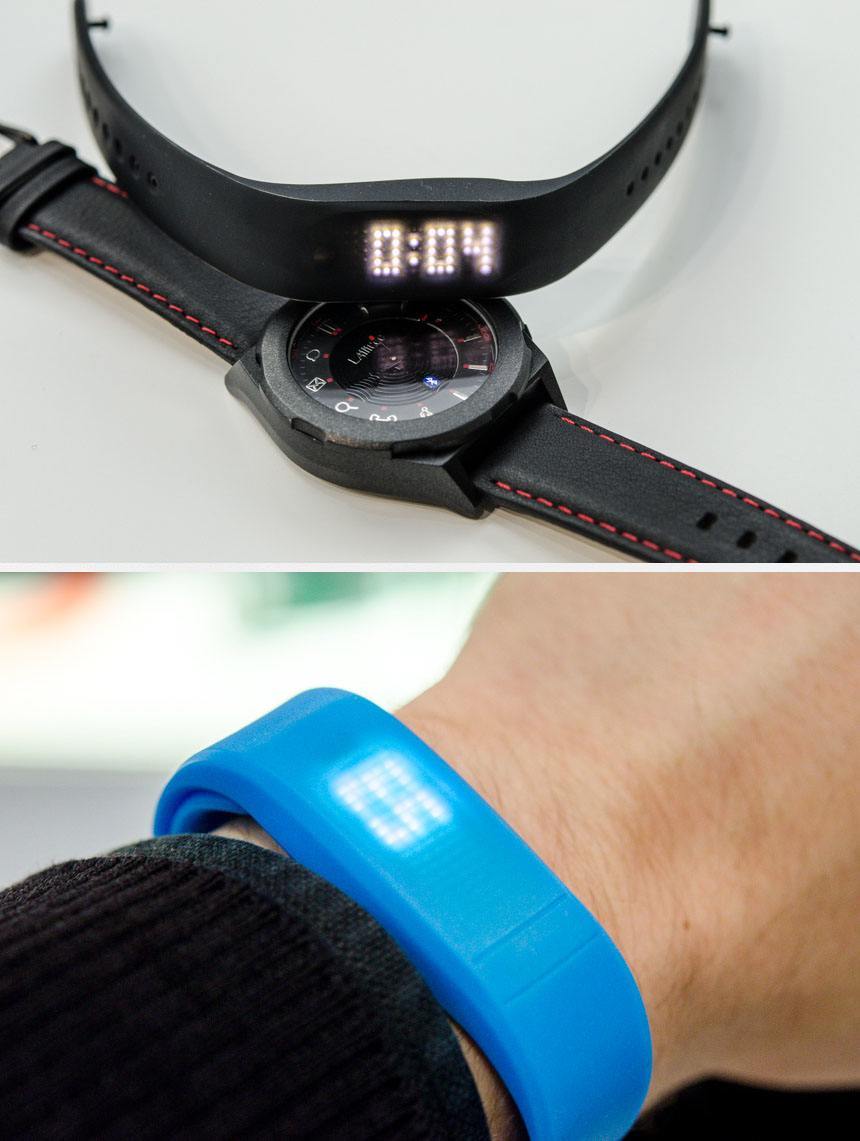
Bluetooth Connected Fitness Bands And Smart- And Notification Watches Were Available From A Large Number Of Brands, Although Many Offerings Were Still In The Prototype Phase
If you have not heard the term notification watch, let us clarify: it often is a more classical looking watch with analog hour and minute hands in the center of the dial, driven by a quartz movement, while the rest of the dial is filled with small notification LEDs, and maybe a more simple LED text screen that can display names and a few other details. The notification icons correspond with the more important notifications one expects from their phone: incoming call (with caller’s name displayed on the text screen), missed call, new message, new email, and low phone battery.
Where these watches wish to stand out is expanded functionality of your phone and saving you time having to reach for it every time it buzzes in your pocket or at the other end of the room. With new and more efficient technologies, like Bluetooth 4.0, the batteries in some of these notification watches can last a year or more, which clearly is a major advantage over smartwatches which have to be charged every one or two days.
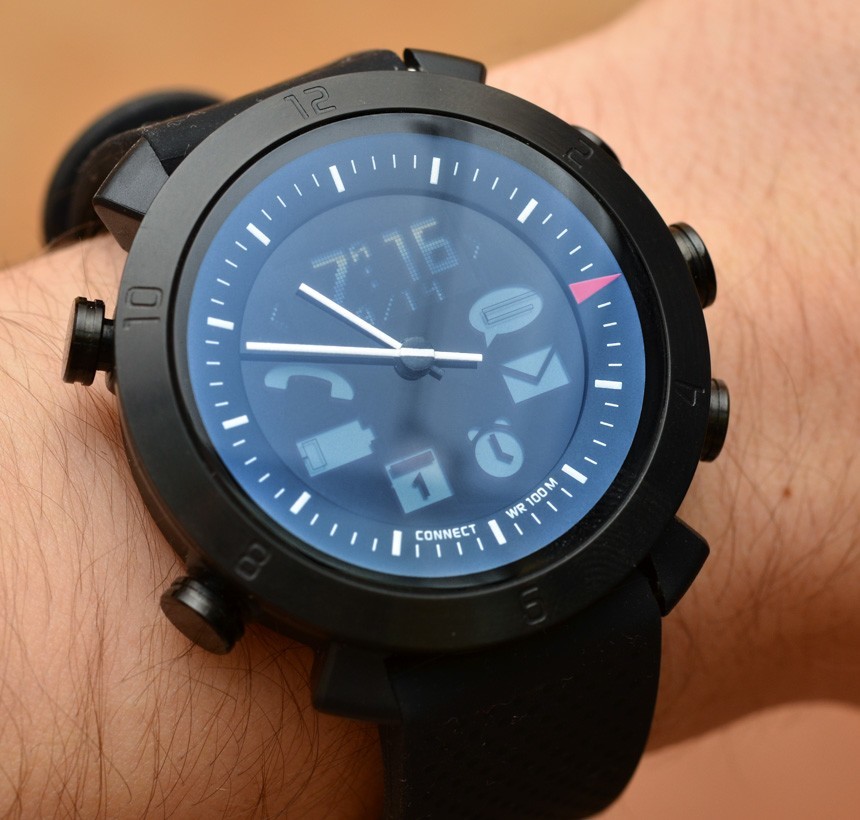
The Cogito Classic Notification Watch Displays Caller ID, As Well As Notifications For New Emails And Messages, Calendar Events, Alarms And Battery Level. Price Is $179
Many of these watches and fitbands seem to be built around the same architecture, with largely similar functionality. The key differentiating factors are the quality of the case and straps, and also, of course, the user-friendliness of the app with which the watch or band communicates – and which is always unique to the maker of the product. There also are major differences in terms of availability: many exhibitors were present at the fair only to show prototypes and hardly-working examples, while the number of brands with finished products already on the market was significantly smaller. Key issues include wearing comfort – as several new brands have little to no experience in designing watches, such seemingly simple (albeit hugely important) details still have to be enhanced – establishing and maintaining connection with the phones, and providing new and unique features, without sacrificing the more simple looks and utility of their devices.
It must be noted that the Fair was held just about a week before the Apple Watch was announced, and while Apple’s release clearly has the potential to seriously affect many of these brands, the considerably cheaper price point – like that of the Cogito Classic watch pictured above, priced at $180 – and the more simple looks, may prove to be enough to allow them to successfully cater to a different market. With that said, how fitbands and notification watches will develop over the foreseeable future is difficult to tell at this point – but the potential is clearly there, and their survival is at stake.
In conclusion, the 2014 Hong Kong Watch & Clock Fair allowed for a unique insight into the inner workings of the Chinese watch industry, giving us the chance to see what are the dominating and the developing trends in the industry. We could see that China avowedly strives to remain the dominating force when it comes to supplying watch parts and finished products – while the fierce competition and quick developments are bringing along some much needed improvements in the level of quality. Smartwatches and their different versions are a hot topic right now, but then again, we have been expecting that. As far as the top end of the market is concerned, proudly Chinese made watches certainly have a future in the region – and it will be exciting to see how they will perform in other regions of the world.
The fair was buzzing on all three days that I was there – welcoming over 19,000 visitors over the course of the 5 days it was open. With over 750 exhibitors, my only gripe is that I could not be at three or more places at once. It will be interesting to see next year how these aforementioned trends have developed as, it is no secret, the Chinese industry moves much faster than its Western counterparts. In some key ways, it still lags behind them, but the pace at which the Asian markets have been catching up is staggering – making every one of these fairs a genuinely unique and new experience.

